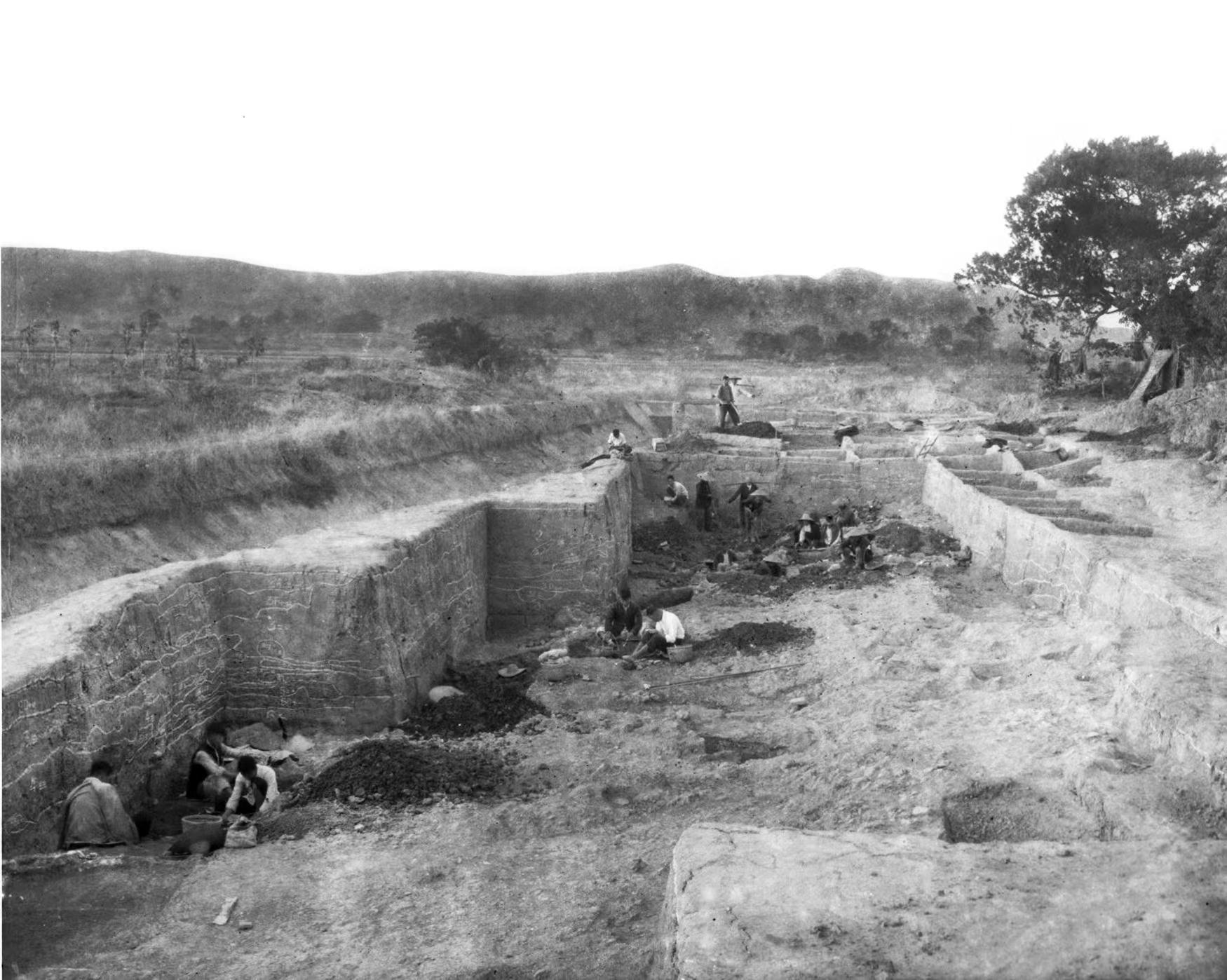考古历程
屈家岭遗址是湖北考古的起点,在1954年配合石龙过江水库工程建设而进行的考古调查中被发现。1955年2月,考古学家张云鹏先生主持了屈家岭遗址的第一次考古发掘,这是湖北地区进行的首次科学考古发掘。1956年6月至1957年2月,屈家岭遗址进行了第二次考古发掘,发掘面积858平方米。两次考古发掘初步了解遗址的文化内涵:出土遗物以彩陶纺轮、薄胎彩陶杯和彩陶壶最具特色;陶器组合中以双腹鼎、双腹豆和双腹碗此类双腹器最为典型。此后,1965年出版了湖北第一部考古报告—《京山屈家岭》,命名了长江中游第一支考古学文化—屈家岭文化。1989年,屈家岭遗址进行了第三次抢救性考古发掘,发掘面积87.5平方米。共清理了13座土坑竖穴墓葬和两期文化堆积,其意义在于提高了屈家岭遗址的年代上限并找到了屈家岭文化的主要来源即油子岭文化。

屈家岭遗址的第一次考古发掘
2015年以来,为配合屈家岭考古遗址公园建设,实现学术研究目标,湖北省文物考古研究院会同荆门市博物馆、屈家岭遗址保护中心成立联合考古队,开展长期持续的考古及研究工作。开创屈家岭遗址第四次考古工作的新局面。截至2022年初,屈家岭遗址联合考古队共完成发掘面积6100平方米,区域系统调查10平方千米,考古勘探面积60万平方米。本阶段考古工作共清理各类遗迹420余处,主要为墓葬、房址、陶窑群、灰沟和灰坑,以及大量的红烧土遗迹,还有少量与奠基活动相关的扣碗和瓮棺葬群。出土遗物丰富,完整器及已复原器物多达1000余件,主要以陶器和石器为主。石器主要为斧、锛和凿等,另有少量石镰、石刀和石质工具。陶器主要为鼎、豆、杯、碗、簋、盆、壶、罐、缸、盘和器盖等,以鼎、碗和豆为大宗,另有大量陶纺轮和陶环。



